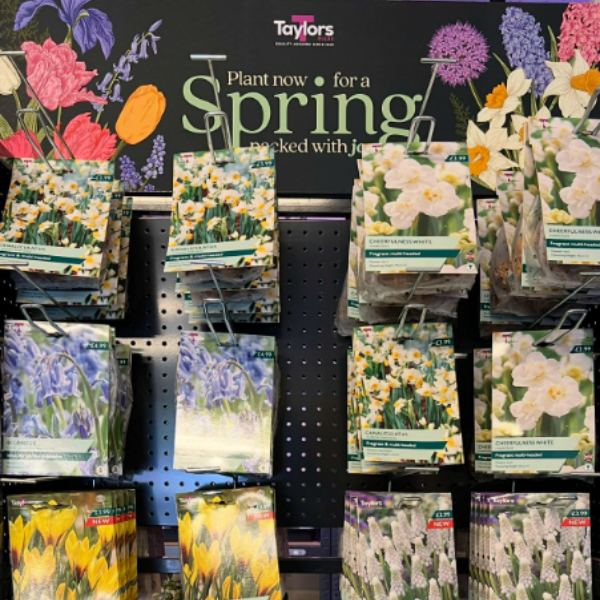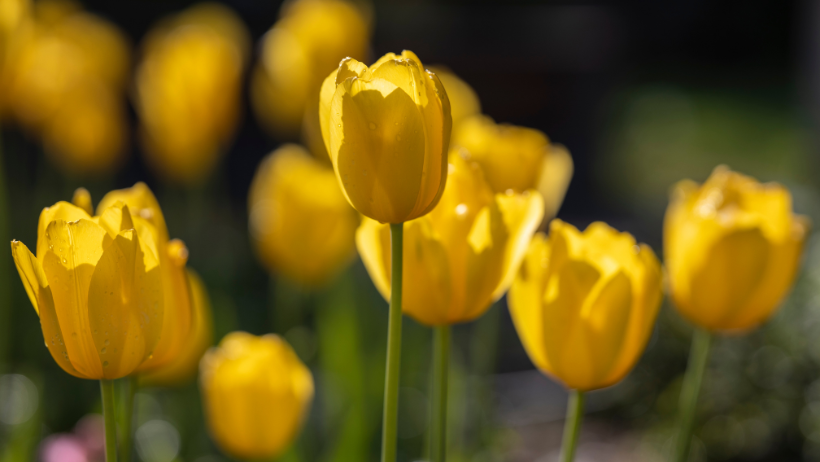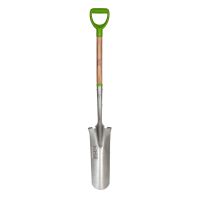The Complete Guide to Planting Bulbs in Scotland: When, Where and How

As we move into November, the days might be shorter and colder, but there is plenty of time yet to plant your spring bulbs and some bulbs, such as tulips, even thrive when planted now. The cooler soil helps to prevent diseases like tulip fire, so don’t worry if you haven’t got your bulbs in the ground yet. A little effort now will reward you with a burst of colour when spring arrives.
When to Plant Bulbs in Scotland
Here in the south of Scotland, November is ideal for planting spring-flowering bulbs. The soil is still warm enough for roots to establish before winter truly sets in.
Tulips, daffodils, crocus, hyacinths, snowdrops, and alliums can all be planted this month. If you are planting bulbs in pots or containers, the compost will warm and drain more quickly than garden soil, helping them settle in well before the frost arrives.
Choosing and Preparing Your Site
Bulbs love well-drained soil. If your garden tends to stay wet through winter, mix in some grit or plant your bulbs in raised areas or containers. Choose a spot that gets some sun through spring, even if it is shaded now, as trees and shrubs will lose their leaves and allow more light through.
If you are planting in borders, dig over the soil to remove weeds and break up any clumps. A small hand fork or trowel is ideal for the job. Mix in some bulb fibre or compost to improve drainage and give the bulbs a good start.
How Deep and How Far Apart
As a general rule, plant bulbs at a depth around two to three times the bulb’s height.
This means:
Tulips: around 20 cm deep
Daffodils: around 15 cm deep
Hyacinths: around 10 cm deep
Crocus and snowdrops: around 8–10 cm deep
Alliums: around 15 cm deep
Space bulbs roughly two bulb-widths apart to give each one room to grow and multiply.
Place the bulb with the pointy end facing up and the roots down. If you are unsure which way is up, plant the bulb on its side and it will sort itself out. After planting, cover with soil and gently firm down with your hand to remove air pockets.
Planting in Pots and Containers
For small gardens or patios, bulbs in pots are a wonderful way to bring spring colour close to the house. Use a mix of bulb fibre and compost for good drainage, and make sure the container has holes in the base.
You can create a layered display known as a “bulb lasagne.” Place large bulbs like daffodils or tulips at the bottom, then add a layer of compost and plant smaller bulbs like crocuses above them. This gives a longer flowering display as the bulbs bloom at different times.
If you’re planting bulbs in pots, I also shared a how-to planting guide on our Facebook page - have a look there for a step-by-step demonstration and a few extra tips for container displays.
Protecting Bulbs from Pests and Frost
Squirrels can be a nuisance, especially when bulbs are freshly planted. To deter them, cover the area with chicken wire or mesh until shoots start to appear.
Frost can damage bulbs in pots, so move containers against a sheltered wall during very cold spells. In the ground, bulbs are naturally protected by the soil but avoid planting in areas where water tends to pool, as this can cause rot.
Aftercare and What to Expect
Once your bulbs are planted, water them well and then leave them to rest through winter. Nature will take care of the rest. In early spring, shoots will begin to appear, followed by a burst of colour that signals the new season is on its way.
When the flowers fade, allow the leaves to die back naturally rather than cutting them off. The foliage gathers energy for next year’s blooms. You can deadhead the spent flowers but let the greenery stay for a few weeks until it turns yellow.
Our Favourite Bulbs for Scottish Gardens
Daffodils: Reliable, cheerful, and ideal for naturalising in grass or borders.
Tulips: A splash of bold colour for pots or formal beds, and they actually perform better when planted in November.
Crocus: Early bloomers that provide a vital food source for pollinators.
Snowdrops: Delicate and elegant, perfect for woodland areas or shady spots.
Alliums: Tall and striking, adding height and structure in late spring.
Get Ready for Spring with Pearsons of Duns
Planting bulbs in autumn is one of the easiest and most satisfying gardening jobs of the year. It brings hope, colour, and life after the quiet of winter. At Pearsons of Duns, we have a wide selection of bulbs, compost, bulb planters, and everything else you need to get started.
If you are not sure which varieties will do best in your garden, just ask our team. We are always happy to help you plan your spring display and keep your garden blooming beautifully through the seasons.
Happy planting,
Nicola
Did you enjoy this blog? Yes! Why not sign up to our newsletter to be the first to know when our next blog from the garden centre team is live.











